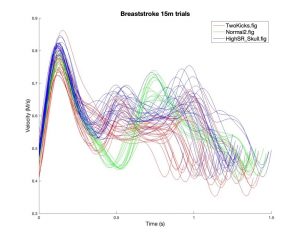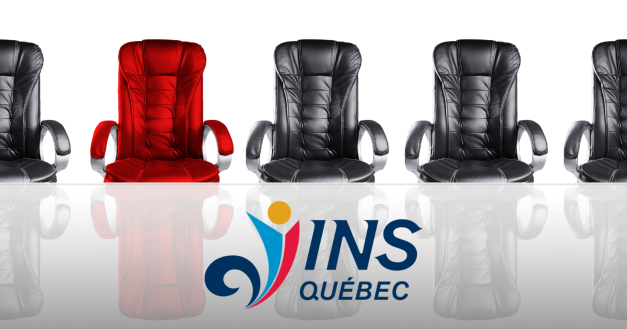Sensors on para-swimmers in competition: a first in Canada

(Photo: Matthew Slopecki, INS Québec intern, Ariana Hunsicker, Clémence Paré and Mathieu Charbonneau)
SENSORS ON PARA-SWIMMERS IN COMPETITION:
A FIRST IN CANADA
For the very first time in Canada, para-swimmers had the opportunity to wear inertial sensors on their bodies during competition, giving them access to a wealth of statistical data. The event took place during the Coupe du Québec de paranatation at Complexe sportif Claude-Robillard.
Clémence Paré, Ariana Hunsicker and Tess Routliffe took part in the exercise, which delighted exercise physiologist Simon Deguire and sports biomechanist Mathieu Charbonneau.
“It’s an idea we’ve had for a while. We already had access to the sensors in training, but to be able to use it in competition is really great! We’re extremely happy with the results, and we’re going to keep working very hard to continue using it,” began Simon Deguire.
“It was last March that the international federation allowed sensors to be worn during competitions. We saw this as a huge opportunity, because we at INS Québec have been developing this technology for ten years with a view to using it in competition. It was a natural step for us to embark on this adventure with our research projects in para-swimming,” adds Mathieu Charbonneau.

Image showing sensor position on swimmers.
Wearing these sensors in competition opens up an incredible range of possibilities for scientists to analyze statistical data. Among other things, we can now see the precise differences in an athlete’s performance between training and competition.
“We have access to so much information, such as arm stroke frequency, velocity and acceleration. Sometimes there’s a gap between what happens in training and what happens in competition. It can be so precise and will make life easier for many athletes and coaches,” continued Simon Deguire.
“The sensor measures acceleration and rotation in all three axes. We can receive 100 pieces of data per second during the race, which gives us a nice profile of our swimmer in real time,” added Mathieu Charbonneau.

Example of the data scientists can collect with the sensor.
The project was extremely well received by the athletes who wore the sensors at the Coupe du Québec. Mathieu Charbonneau believes that many will want to repeat the experience in the near future.
“It’s really revolutionary for athletes. It goes beyond the limits of stopwatches and video analysis. You can see, for example, that at the 23rd stroke, the athlete starts to tire. This allows us to see how the athlete reacts in competition and to make precise corrections in training. We can use the data to make it easier to choose a technique, without necessarily having to go through trial and error with an athlete.”
While these sensors are not yet accepted in international para-swimming competitions, Simon Deguire and Mathieu Charbonneau can count on the support of their provincial and national federations to push ahead with this innovation.
“It’s a tool that benefits enormously from being known. There’s always progress to be made, and that’s what’s so exciting. The Fédération de natation du Québec and the Coupe du Québec organizing committee have helped us and given us a lot of freedom to use the sensors during the competition. This is just the beginning, and there’s sure to be a sequel very soon,” concluded Deguire.


